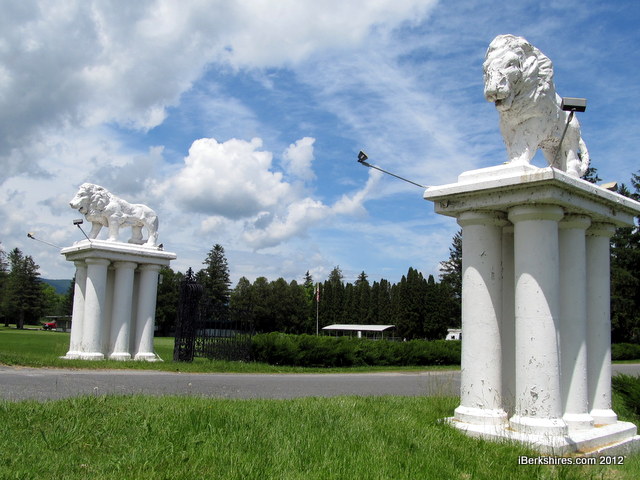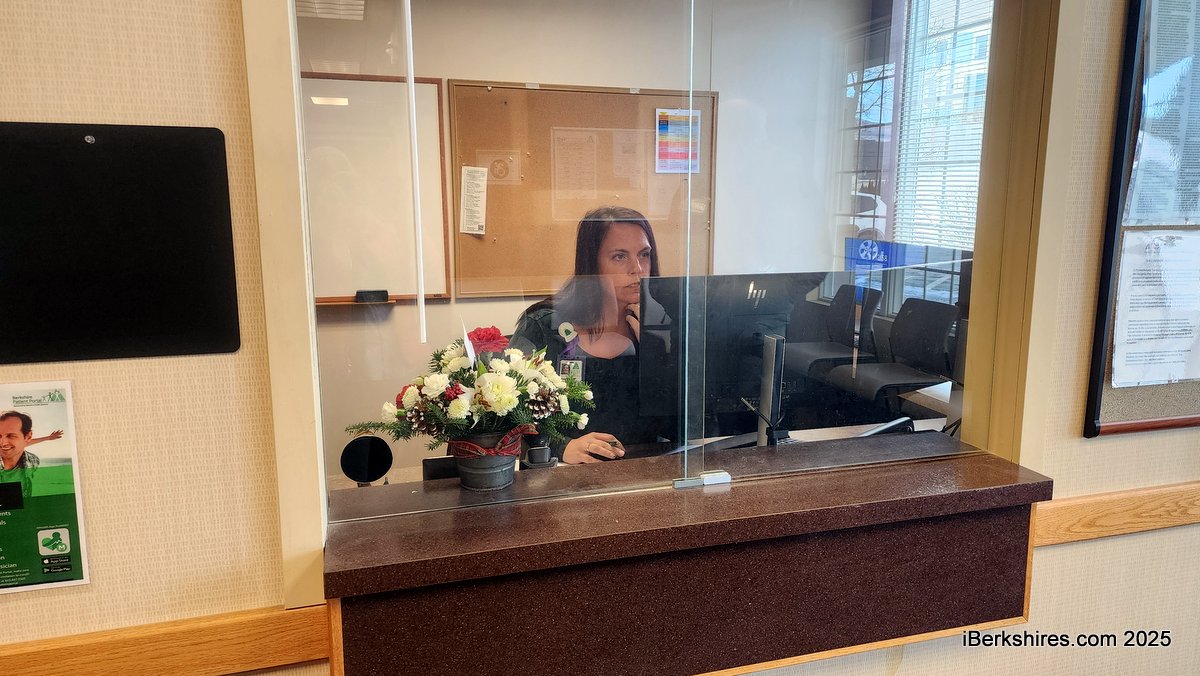'Save the Spruces' Group Dominates Conservation Meeting
|
Some 150 people attended what was billed as an informational meeting on maintaining conserved land but 'Saving the Spruces' dominated the talk. |
WILLIAMSTOWN, Mass. — Spruces Mobile Home Park residents who do not want to relocate turned out in force Wednesday night at a meeting organized by conservationists looking to save the property being eyed for that relocation.
The newly formed Friends of Williamstown Conservation Lands called the meeting in the ballroom of the Orchards to discuss ways to stop a plan to remove the 30-acre Lowry property from conservation and use it to build affordable housing.
The conservation group founded by former selectman Kenneth Swiatek found some friends in a group of very vocal, angry Spruces residents who expressed frustration with the town's plan to apply for FEMA grant money to buy the storm-damaged mobile home park and build housing on the conserved land off Stratton Road.
"We want to remain in the Spruces," resident Linda Bell said before a meeting of about 150 attendees from both camps. "[Town Manager Peter] Fohlin promised we would stay there after the flood. And now we're being thrown out."
The flood in question is last year's Tropical Storm Irene, which destroyed 153 homes in the park, adding to an existing deficit of affordable housing in the town.
Sixty-seven homes remain occupied at the Spruces, and on Tuesday, a group of 10 of those residents came together to form the Save the Spruces committee, according to that group's spokesman, Peter Russell, who attended Wednesday's meeting.
Although Swiatek opened the meeting with general discussions about the benefits of conserved land and the process for taking land out of conservation, as soon as the conversation turned to the specifics of the town's plan to buy the Spruces (and put its 114 acres in conservation), the park's residents dominated the conversation.
"We're human beings," Russell said during the meeting. "I live in the Spruces. I don't want my home taken away. I want you people to come together and help us save the Spruces."
Another resident from Russell's group told the meeting that many of the Spruces residents had spent their own money to fix their homes after the flood, and they feel that promises have been broken by the town.
"We were assured by the same Mr. Fohlin and the same Morgan Management that they would keep the park open," the Rev. Sue Stewart said, referring to the owner of the mobile home park, which has a purchase agreement with the town contingent on the federal grant money. "That's why you're hearing anger."
Neither Fohlin nor any members of the Board of Selectmen attended Wednesday's meeting. Members of at least two town committees were in attendance, and both Sarah Gardner, who serves on the Conservation Commission, and Beth Phelps, who chairs the Agricultural Commission, encouraged Spruces residents angered by the plan to attend relevant town committee meetings, including those of the Selectmen, which meets the second and fourth Monday of each month at 7 p.m.
"If you're interested in conservation land, go to the Conservation Commission, if you're interested in agricultural land, go to the Ag Commission, if you're interested in affordable housing, go to the Affordable Housing Committee," Gardner said. "I feel like a written statement from the residents would be helpful."
|
Created as a retirement community, the Spruces contained much of the town's affordable housing until Irene struck. The park, most of which lies in a floodplain, had been plagued by water even before the tropical storm hit. |
Fohlin and members of the Selectmen met privately with Spruces residents before announcing the plan to swap the conserved land and build new affordable housing at a Nov. 13 Selectmen's meeting. At the public meeting later that evening, Fohlin characterized the meeting with the residents as emotional but declined to speculate about what was in their heads.
On Wednesday, Russell said the residents were respectful at the meeting and are now ready to make their objections public.
Bell agreed.
"We were so shocked we couldn't ask questions," she said of the Nov. 13 meeting. "now we're fighting back. We are asking questions."
Russell said Fohlin has told residents he will meet with them again in December.
The town manager was defended at the meeting by Robin Lenz, the former director of Higher Ground, the interfaith non-profit that was formed in the aftermath of Irene largely to address the needs of Spruces residents displaced by the storm.
"My experience the last 13 months is that the town has it's heart in the right place," Lenz said. "The town could have walked away. It could have said, 'We don't have to find houses for folks. We could let floods happen routinely.' My understanding is that Morgan Management cannot operate [the park].
"That Peter Fohlin has been working, in my opinion, night and day to find options for residents of the Spruces speaks volumes about his character."
Lenz did later say she agreed wholeheartedly with the sentiment that the town should be looking first to develop "brownfields" like the former town garage site, the former Photech mill and the Cable Mills complex on Water Street before acting to take land out of conservation.
Swiatek said the Lowry property has unique beauty and provides habitat for wildlife as well as opportunities for recreation. The Friends of Williamstown Conservation Lands plans weekly hikes on the property each Sunday in December, he said.
"If you're going to propose affordable housing, don't put it on conserved land," he said. "Why? Because it's conserved land.
"I think conservation is an important thing and shouldn't be taken lightly. Open space is pretty rare."
Tags: affordable housing, conserved land, Irene, Spruces,


















